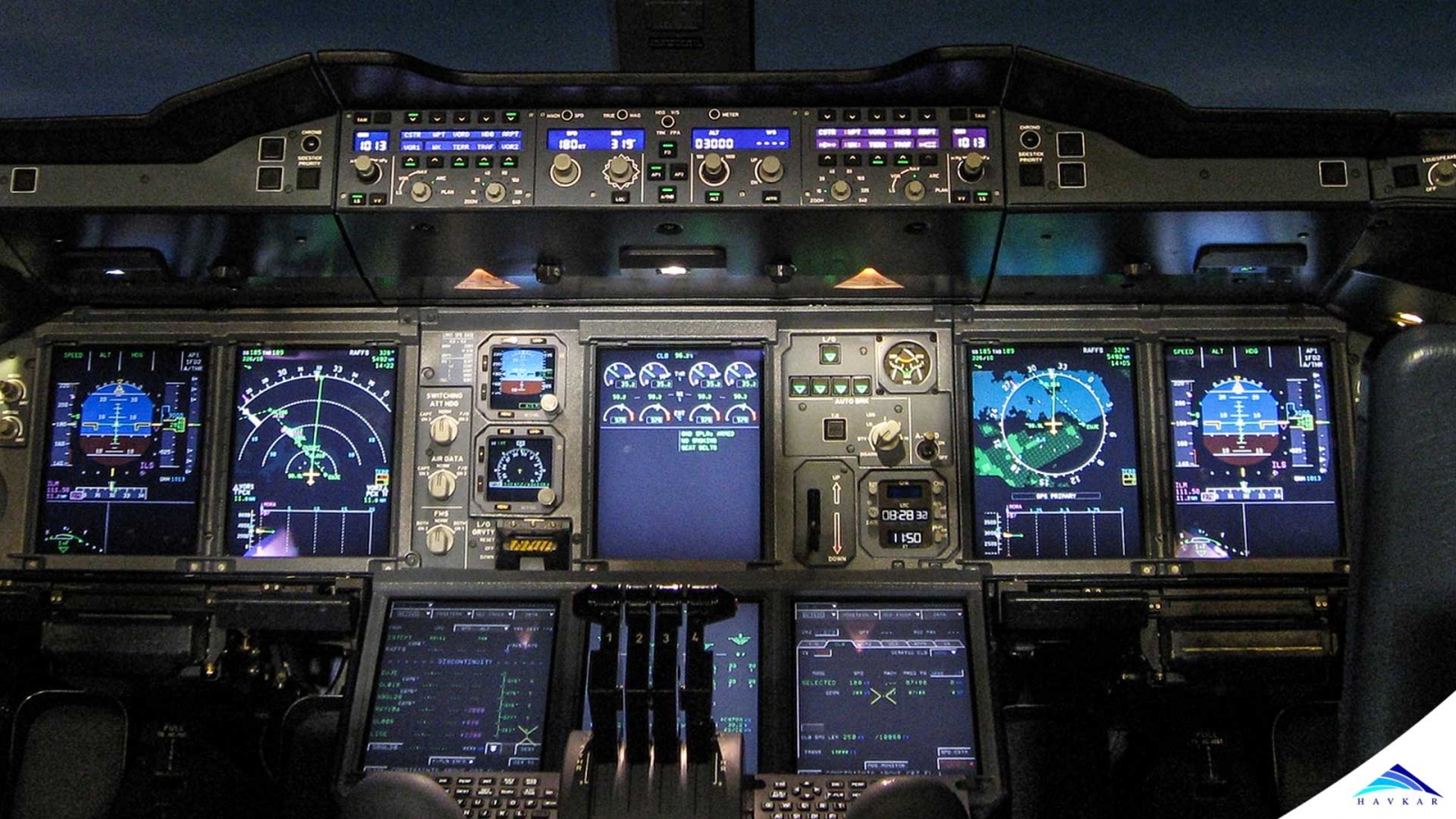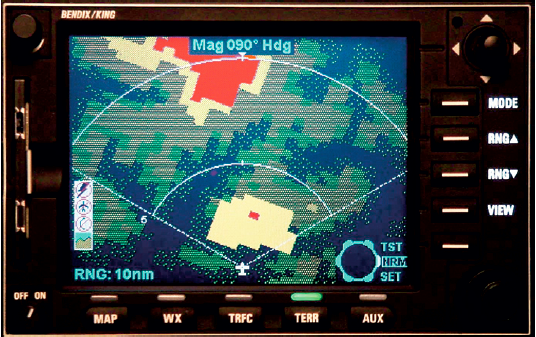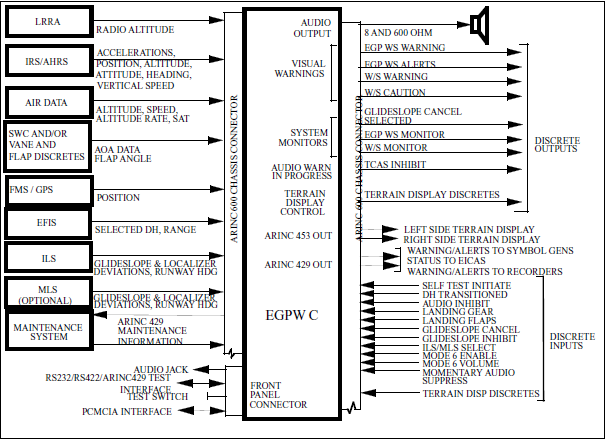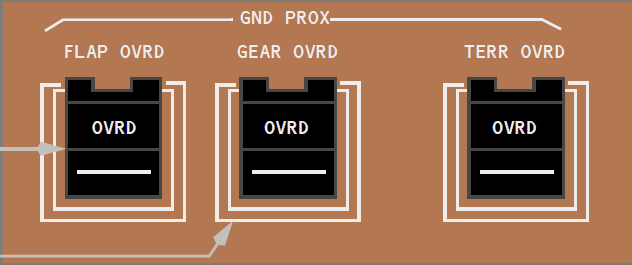
Beginning in the early 1970s, a number of studies looked at the occurrence of Controlled Flight into Terrain (CFIT) accidents. It appeared that a properly functioning airplane could be flown into terrain without any apparent reason.
Furthermore there was also no apparent awareness on the part of the crew of what was happening. Findings from these studies indicated that many such accidents could have been avoided if some warning device alerting the crew of the proximity of the ground had been used: the Ground Proximity Warning System (GPWS) was born.
“Basic” Ground Proximity Warning System - GPWS
The “Basic” GPWS has been developed by the Bendix engineer Don Bateman in the early 1970s. He coupled a radio altimeter with a voice recorder pre-programmed with a number of pilot warnings including "Terrain, Terrain" and "Pull up, Pull up". These warnings were sequentially triggered, at preset altitudes, as the aircraft came closer to the ground.
Later on, thanks to using the inputs from other sensors, the system has been enhanced to detect other potentially hazardous situations. The figure below represents the inputs/outputs of a typical Ground Proximity Warning Computer (GPWC).

(source: D. Franjković, T. Bucak, N. Hoti: Ground Proximity Warning System – GPWS, 1999)
The detected situations are summarized in the table below:
The detected situations are summarized in the table below:The airspeeds mentioned in the previous table are typical speeds; they can vary from one aircraft to another.
The modes 1 to 5 were present almost since the beginning. Mode 6 was added with the first digital computer models in 1982 while mode 7 was added when wind shear detection equipment became mandatory on some categories of airplanes in 1985.
The most noticeable limitation of the GPWS is the fact the radar altimeter cannot look ahead and therefore cannot pick up steep terrain. If there is a sharp change in terrain, GPWS does not detect the aircraft closure rate until it is too late for evasive action.
To enable aircraft to land without unwarranted warnings, the detection logic has to be switched to a landing mode. Thus, when the airplane is configured for landing, the GPWS will not warn of insufficient terrain clearance.
The Extended GPWS will address these limitations.
Extended Ground Proximity Warning System - EGPWS
To overcome the limitations of GPWS, a new technology named Enhanced Ground Proximity Warning System (EGWPS), developed again by Don Bateman at Honeywell, was introduced in 1996. It combines a worldwide digital terrain and obstacles database with an accurate navigation system, ideally using the Global Positioning System (GPS)/Flight Management System (FMS).
The aircraft’s navigation position is compared with a database of the Earth's terrain and obstacles. The EGPWS or generically the TAWS will provide a warning in advance of steeply rising ground and also extends the warning area almost to the runway threshold.
The TAWS are divided into 3 classes: A, B and C. The class-A encompasses all the functionalities of the class-B plus other ones, a terrain awareness display to the aircraft’s display system and a “fully autonomous” Ground Proximity Warning System (GPWS).
The figure below gives an example of a terrain awareness display.

(source: Honeywell Mk VI and Mark VIII EGPWS Pilot’s Guide)
Furthermore a class-A TAWS must be able to prioritize its alerts with the alerts coming from other devices such as Traffic Collision Avoidance System (TCAS), Predictive Wind shear System (PWS), …
The class-C category is intended for voluntary installations on smaller aircraft not covered by the requirements for class-A and -B TAWS, mainly the general aviation planes. The class-C TAWS shall meet the entire requirement of class-B equipment but with small modifications.
The color coded table below provides the alerts that must be present in class-A and –B TAWS and those that are optional.
The airspeeds mentioned in the previous table are typical speeds; they can vary from one aircraft to another.
The figure below illustrates the interfacing of the TAWS computer with other onboard systems on a typical air transport plane.

(source: The Avionics Handbook)
TAWS Alerts Inhibition
The crew can disable some TWAS alerts if they are judged disturbing. The figure below is an illustration of the related switches on the Boeing 757/767.

The “GEAR OVRD” guarded switch inhibits the mode 4A alerts.
The “FLAP OVRD” guarded switch inhibits the mode 4B alerts.
The “TERR OVRD” guarded switch inhibits the FLTA and PDA alerts.
Regulations:
USA
In 1974 the American Federal Aviation Administration (FAA) required all Part 121 certificate holders (scheduled air carrier: airliners) and some Part 135 certificate holders (charter and on-demand operators) to install TSO (Technical Standard Orders)-approved GPWS equipment.
Due to other studies, it appeared that it would be interesting to make TWAS mandatory on a broader range of aircrafts. Therefore, in 1978, the FAA extended the GPWS requirement to Part 135 certificate holders operating smaller airplanes: turbojet-powered airplanes with ten or more passenger seats. In 1992 the FAA amended §135.153 to require GPWS equipment on all turbine-powered airplanes (turboprop and turbojet) with ten or more passenger seats (57 FR 9944, March 20, 1992).
To take into account the new technologies allowing to look terrain ahead, in March 2000, the FAA issued Amendments 91–263, 121–273, and 135-75 (Correction 135.154) (65 FR 16736, March 29, 2000) with an effective date of March 29, 2001. These amended the operating rules to require that all U.S. registered turbine-powered airplanes with six or more passenger seats (exclusive of pilot and copilot seating) be equipped with an FAA-approved TAWS. In this time, by TAWS, the FAA was meaning EGPWS. The FAA used a broader term because a variety of systems meeting the EGPWS requirements may be developed in the future. This mandate only affects aircraft manufactured after March 29, 2002.
Since April 24, 2017, the FAA requires that helicopters operating as air ambulances (Correction 135.605) are equipped with HTAWS (Helicopter TWAS). Let's notice that already on March 7, 2006, the National Transport Safety Board (NTSB) called on the FAA to require all U.S.-registered turbine-powered helicopters certified to carry at least 6 passengers to be equipped with a TAWS.
Europe:
The European Aviation Safety Agency (EASA) requirements in terms of TAWS are the following:
You have to read “MTOM more than 5700 kg” OR “Passengers more than 9”.
ICAO
The International Civil Aviation Organization (ICAO) requirements in terms of TAWS are the following:
You have to read “MTOM more than 5700 kg” OR “Passengers more than 9” and “MTOM less than 5700 kg” AND “Passengers 5-9”.
Benefits of TAWS
To conclude, we can say that making TWAS mandatory on almost all commercial airplanes has reduced drastically the number of CFITs and saved hundreds of lives.